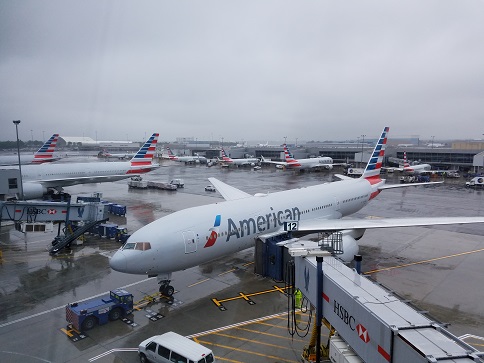American Airlines is primarily a domestic airline. They’re smaller internationally than Delta and United. Their focus has been building domestic connections between the middle of the country and also the Sun Belt.
Like all the other major airlines they have a number of planes parked, especially widebody planes that fly internationally. Talking to pilots last week about how they’ll grow their route network again and deploy these widebodies, American’s Senior Vice President and Chief Revenue Officer Vasu Raja offered four principles.
- They want to return to China quickly, saying they “are looking at trying to bring the Dallas Fort-Worth to Shanghai flight back…If we were a little further ahead in our integration with Alaska we’d be looking at trying to advance the Seattle – Shanghai flight.”
- They may deploy widebodies to Florida “some of our hub-to-hub flights, when we get to the fourth quarter we are the biggest operator to Florida because we have the big Miami hub, and right now Florida is a place people want to get to…one of the things we are looking at is whether we should use some of those widebodies to just do things like fly New York to Miami and Chicago to Miami.”
- Focus on London Raja poined out that their “largest international operation isn’t domiciled in the U.S., it’s London…the most important port of entry in our international system is London Heathrow.” Expect that with restrictions lifted on U.S. airports allowing arrivals from Europe that London flights get added back first, although perhaps not until early 2021.
- Lead with cargo because “it used to be we’d sell passenger demand and then we’d try to figure out how to put cargo on it…cargo can cover the price of fuel, and then if we can generate enough passenger demand maybe we can make this stuff go into the future.”

American’s major focus growing international flying going forward, looking past winter, is bringing international flights to partner hubs – the way Vasu Raja talks about the British Airways hub at London Heathrow he also talks about the Alaska Airlines Seattle hub and JetBlue New York JFK hub. In fact, he calls Seattle American’s hub now.


“In fact, he [Raja] calls Seattle American’s hub now.”
Accidental mistake, or Freudian slip of things to come?
So when is AK and AA merging. . .:)
AA always refers to their partner hubs as their hubs.. like London for BA/AA joint venture and NYC airports for Jetblue.
These kind of unique insights are great, and are what makes Gary’s site stand out from the other blogs. Thank you for sharing AA’s thinking on this matter.
The competition at NYC is enormous – but so is the market. AA will be wise to restore more service there post-pandemic. And they have an excellent terminal facility at JFK.
SEA is going to be much more difficult, unless Delta decides to throw in the towel there (which I think they probably should). Otherwise, it’s going to be hard for AA to build scale there. And it seems out of the two AA “starter” long-haul routes there, one is too unique, and the other is too redundant.
@Sunviking82 Probably no time soon. While an LAX-KUL flight would be fun, I just don’t see AirAsia being the ideal merger partner. Doug probably does envy their low cost model, though.
SEA is going to be much more difficult, unless Delta decides to throw in the towel there (which I think they probably should).
————–
I live in Seattle now. For the first time in my life I no longer live in a United hub (SFO, IAD). United is small here, even though they pioneered West Coast travel in the 1930s. So now the major airlines are Alaska (Boeing) and Delta (moving toward Airbus). I prefer Delta for that reason. I would hate to see Delta minimize their presence.
@GARY —> Brief digression. I wonder what Raja, Parker, and Isom think of their decision to pull out of T2 at SFO for new digs in T1? Delta has moved into T2, sharing it only with Alaska, Delta’s latest target. Meanwhile, if Alaska is becoming a full OneWorld partner…wouldn’t staying in the same terminal as Alaska make for better connections, more convenient travel arrangements, easier handling of “through baggage”? etc., etc….
/\/\/\/\/\/\/\/\/\/\
@carletonm —> Just in the “For Whatever It’s Worth” Department, I, too, prefer Airbus over Boeing in most head-to-head aircraft comparisons (e.g.: 737 v. A320). I came to Alaska (all Boeing) from Virgin America (all Airbus), and I miss those Airbus planes. However, Delta has *never* been a valid option for West Coast travel, especially if your home base it the SF Bay Area! United has a huge hub at SFO, but SFO was also VX’s home base, so it’s now a large Alaska hub.
True Delta is moving into SEA in a big way, and they’re competitive at LAX, but the biggest player remains Southwest…